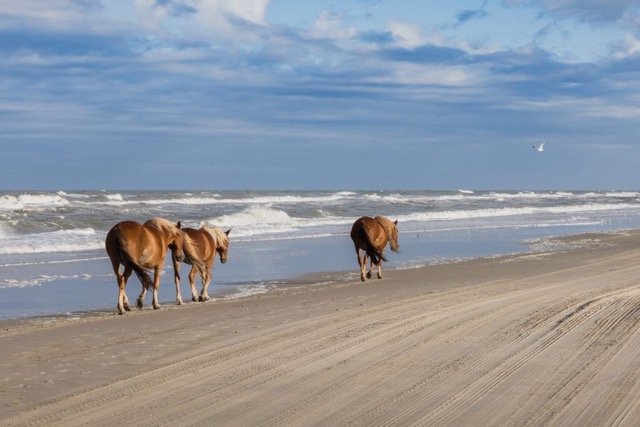OPINION: Round up the horses
By Nelson Paul, for Carolina Journal
In the Disney “Toy Story” movie series, Buzz Lightyear and Woody are the unlikeliest of friends. The stark contrast between the two figurines and the cultures they represent is purely intentional. The movie plots are built around these two sorting out their different approaches to whatever the problem is at hand. So many scenarios involving the authoritarian idealistic space cadet versus the pragmatic, down-to-earth cowboy play out with improbable and hilarious results.
At the beginning of World War II, Coastal North Carolina was transformed from a simple agrarian society into a full-on militarized culture. It wasn't changed just to train an army to defeat the Axis powers; enemy U-boats were just offshore, actively decimating domestic shipping. The societal transformation was necessary, and even essential, for that time.
After WWII, a lot of military infrastructures were abandoned or turned over to local governments. Some of the bases were enlarged, and their "missions" expanded, creating the economic dynamos of Cherry Point and Camp Lejeune that have greatly enriched the surrounding sleepy fishing and farming communities.
Looking in from the outside, most people think that the two cultures would have become more intertwined. There has been some of that. But the idea that the transient nature of military populations would blend in gracefully with multi-generational indigenous family units is not unlike the friction that exists between Buzz and Woody in a typical "Toy Story" movie episode.
The Restricted Military Airspace (RMAS) is an imaginary polygon draped over a large portion of central coastal North Carolina. (See illustration in article) The RMAS takes a huge bite out of Pamlico Sound, Neuse River, Pamlico County, and Down East Carteret County.
Maybe imaginary on paper, the RMAS is a real fortress for aviation traffic. The air traffic controllers enforce it at the Cherry Point Marine Corps Air Station, and they are extremely strict about who uses it. And for good reason. The RMAS is the natural habitat of what are undoubtedly the fastest, most high-tech, and most lethal, manufactured objects on the planet.
Formed in the age of prop planes, the RMAS was likely oversized for the purposes at that time. But fast forward 80 years of aviation technological development, and the space is relatively small for containing the supercharged jet-powered rocket ships they call airplanes now. The only available and obvious solution is that military training activities spill out over the Atlantic Ocean.
Virtually all military jets in service today are capable of supersonic flight. Some are capable of more than double that. Even though it is illegal to break the sound barrier over the continental United States, few mortals would be able to resist if they were to find themselves astraddle one of those $100M machines! Banks ponies are not the only horses that run wild over the sandy beaches of Core Banks!
The recent crash of the Pilatus PC-12 with eight people on board in the Atlantic off Drum Inlet has left one simple, giant, unanswered question begging for relief. What happened?
Nelson Paul is a real estate agent, former NC Coastal regulator, inventor, husband, and father of four, and a grandfather of seven.



